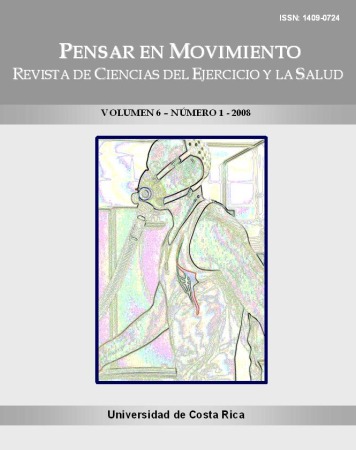Abstract
The aim of the study was to determine the effect of a resistance training program in hemodynamic responses and adaptations in 60 yr. old elderly. Volunteers were 60 healthy-elderly who underwent a training program 3 times/wk. for 12 wk. Participants were randomly assigned to either a control group, an exercise group who trained at 30% intensity of 5 maximal repetitions (5RM) (30% of 5RM) or an exercise group at an intensity of 70% (70% of 5RM). Hemodynamic variables measured were mean arterial pressure (MAP), calculated before and immediately after the training session, and rate pressure product (RPP), estimated once a month and before and after finishing the program. Results indicated that resistance exercise training at 30% and 70% of 5RM, with a total exercise work of 872.7 and 890.9 kg did not elicited cardiovascular risks for the elderly. A 12-wk resistance exercise training reduced the cardiovascular strain as shown by the RPP (~16%) and the MAP (~9%), with no adverse effects throughout the program. Unfortunately, all the hemodynamic benefits were reverted 6 days following completion of the program. In conclusion, a healthy elderly population must perform resistance training exercises to significantly reduce the cardiovascular stress. We suggest to conduct further research that looks into different exercise intensities in longer program duration and to determine the mechanisms responsible for the deleterious effects of the detraining by using physiological, biochemical and biomechanical variables.
This work is licensed under a Creative Commons Attribution-NonCommercial-ShareAlike 4.0 International License.
Copyright (c) 2014 PENSAR EN MOVIMIENTO (Thinking in/about Motion)
Downloads
Download data is not yet available.

